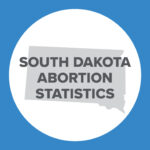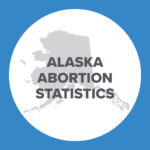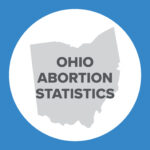Adoption: The Case for the Credit
To view this fact sheet as a pdf, see: Adoption: The Case for the Credit
The adoption tax credit (ATC) as structured today was introduced more than two decades ago by Ways and Means Committee chairman Bill Archer as part of the Small Business Job Protection Act of 1996. It is related to the wave of family-linked child tax credits championed by Republicans as the “crown jewel” of the 1994 Contract with America. The credit and its various extensions over the years, leading to its being made permanent as part of the American Taxpayer Relief Act of 2012, have enjoyed bipartisan support and been signed into law by Presidents Clinton, George W. Bush, and Obama.
Scope and Cost of the Credit
The adoption credit has enormous symbolic and practical meaning despite its relatively small cost. It provides help in situations where children have special needs, in international adoption (only if the adoption is finalized), and in domestic adoptions from birth or out of foster care (the latter defined by law as “special needs” irrespective of physical disabilities). It expresses the commitment of the nation to find permanent homes for children at risk of poverty, under-education, or neglect, and reinforces the message that there are real alternatives to abortion.
There were 110,373 U.S. adoptions in 2014 (National Council for Adoption). Of these children, 61,341 were classified as having special needs. Between 47,000 and 53,600 adoptions in 2014 involved public welfare agencies. In 2015 the adoption tax credit resulted in federal tax expenditures of approximately $300 million ($355 million in 2014), a level that has been stable, except for the period 2010-2011 when the credit was briefly made refundable. Concerns about abuse of the credit led the IRS in 2012 to audit 69 percent of all adoption credit users with disallowance of only 1.5 percent of claims.
According to the Tax Policy Center, citing data from OMB and the IRS, the proportion of all benefits provided by the adoption tax credit to taxpayers with income under $75,000 per year was 44.9 percent. An additional 17.5 percent of the value of the credit, in dollar terms, went to taxpayers making between $75,000 and $100,000 per year.
Savings to the Public Purse from the ATC
One of the original purposes of the ATC, as well as of ATCs offered now in 19 states, is to promote adoption out of the foster care system. In recent years such adoptions have increased, but the number of children cleared for adoption but still in the system and the total number of children in the foster care system have increased by a larger amount. Comparing figures for the past five years (Adoption and Foster Care Reporting System, Administration for Children and Families, DHHS, 2015):
| 2011 | 2015 | |
| Number of Children in Foster Care | 397,605 | 427,910 |
| Number Waiting to be Adopted | 106,440 | 111,820 |
| Number Adopted with Child Welfare Agency Involvement | 50,913 | 53,549 |
Adoption out of foster care results in immediate as well as long-term savings to federal and state taxpayers.[1] The total cost of maintaining children in the U.S. foster care system is substantial and likely rising due to continued high rates of family dissolution and growing opioid use and addiction.
The Trump Administration budget for Fiscal Year 2018 projects increases under Title IV-E Foster Care and Adoption Assistance (Social Security) from $7.7 billion in 2016 to $8.457 billion in 2018, an increase of $432 million from the 2017 level alone and more than the total annual cost of the adoption tax credit.[2] Other than Medicaid, this increase represents the largest categorical increase in mandatory outlays in the 2018 HHS budget.
Besides the direct costs in foster care and other public expenditures the adoption tax credit may avert, evidence shows that males and females alike who exit from foster care without being adopted are over-represented in a variety of negative outcomes, including unemployment, out-of-wedlock child bearing, drug and alcohol abuse, and arrest and incarceration rates. The passage of the ATC in its early years was associated with a large upturn in the number of children adopted out of foster care, but the number has stabilized at around 50,000 per year. Repeal of the credit could reasonably be hypothesized to produce a significant decrease in the number of children adopted out of the system.
For comparison’s sake:
| The average cost of the ATC to the U.S. Treasury per family: | $4,802 |
| Average annual cost of methadone maintenance for drug abuse | $4,700 |
| The average annual cost of incarceration in a federal prison: | $31,977.65[3] |
| The average annual cost of confinement in a Residential Re-entry Facility: | $26,082.80 |
Disproportionate Share of Foster Care Adoptions to Lower-Income Homes
According to one study cited by the Congressional Research Service, “[O]ver 30% of all adopted children and over 45% of the children adopted from foster care [are] living in households with income no higher than twice the poverty threshold.”[4] To the extent that disproportionate use of the tax credit by higher-income households, or for adoptions of non-foster care or non-special-needs children, is a concern, modifications of the credit size (including increasing it for children in the foster care system) or adjusting the upper-income eligibility range are better tailored than proposals to repeal this valuable credit for all taxpayers.
[1] Nicholas Zill, “Adoption from Foster Care: Aiding Children While Saving Public Money” (May 2011) at https://www.brookings.edu/research/adoption-from-foster-care-aiding-children-while-saving-public-money/. This fact sheet dissociates itself from an unfortunate and unfounded remark in this otherwise useful paper regarding the DNA of the foster care population.
[2] https://www.hhs.gov/sites/default/files/Consolidated%20BIB_ONLINE_remediated.pdf.
[3] https://www.federalregister.gov/documents/2016/07/19/2016-17040/annual-determination-of-average-cost-of-incarceration.
[4] Kreider and Lofquist, Adopted Children and Stepchildren: 2010, U.S. Census Bureau; cited in Margot Crandall-Hollick, “Adoption Tax Benefits: An Overview,” Congressional Research Service, January 24, 2017 at https://fas.org/sgp/crs/misc/R44745.pdf.























